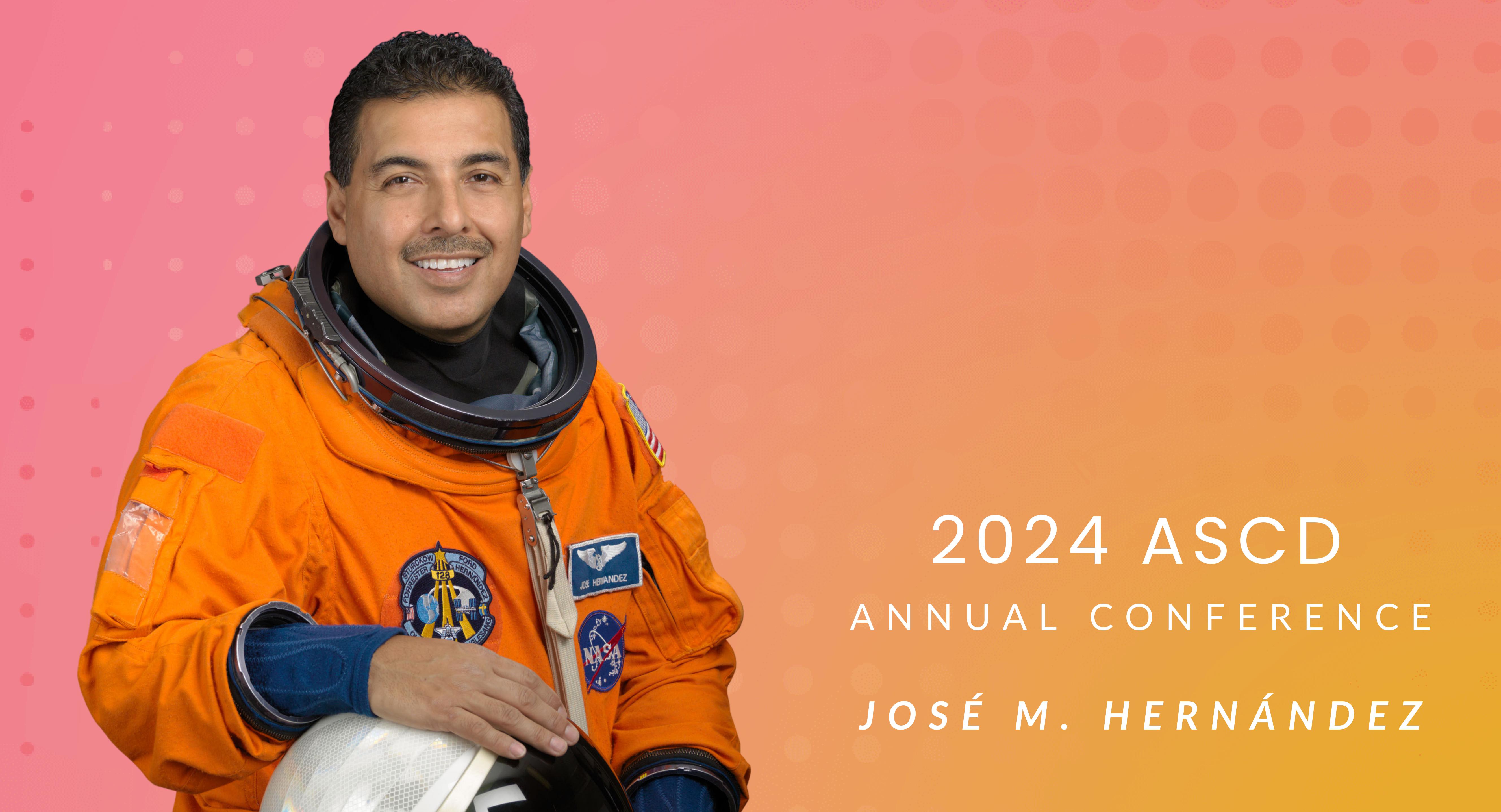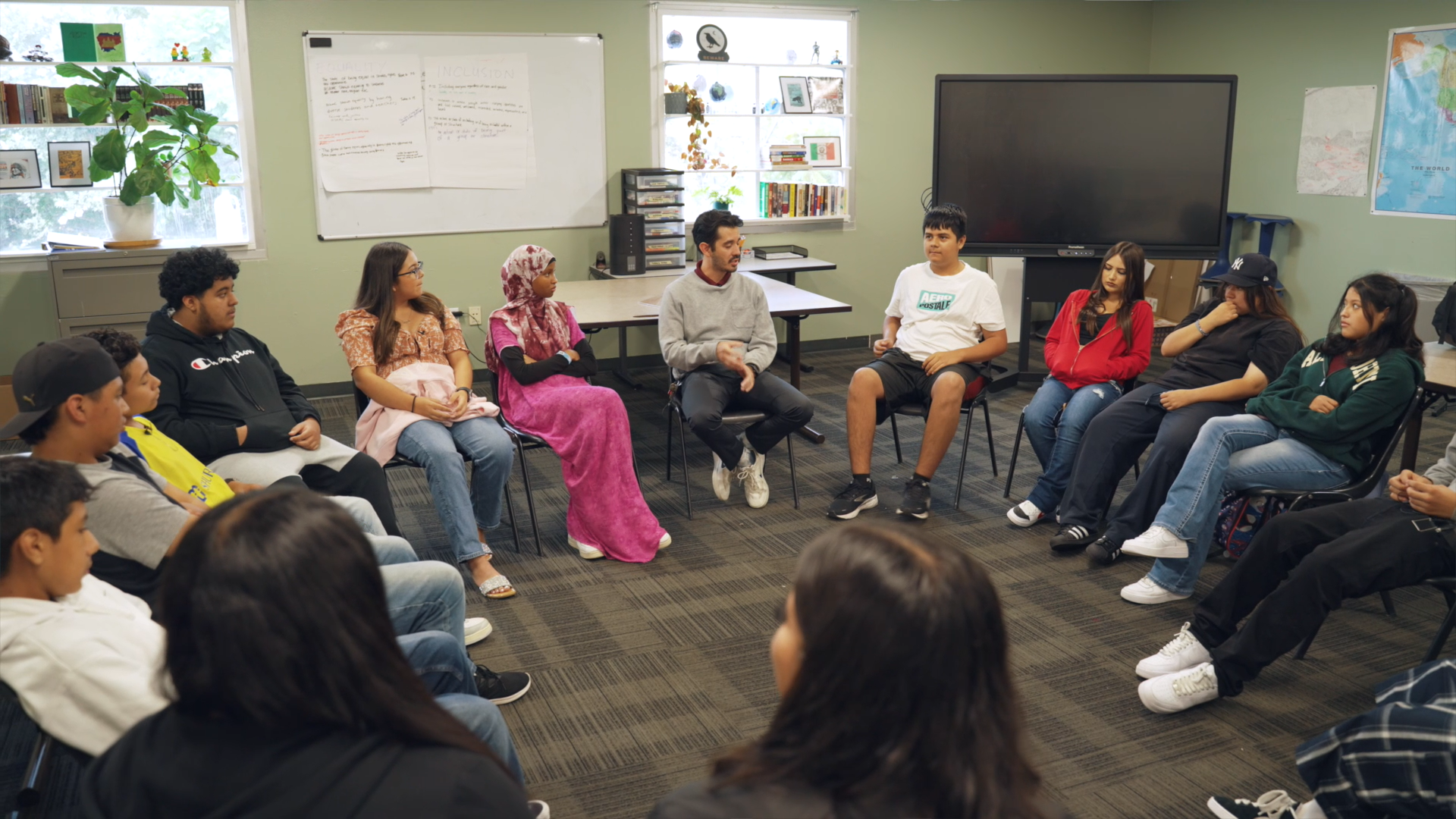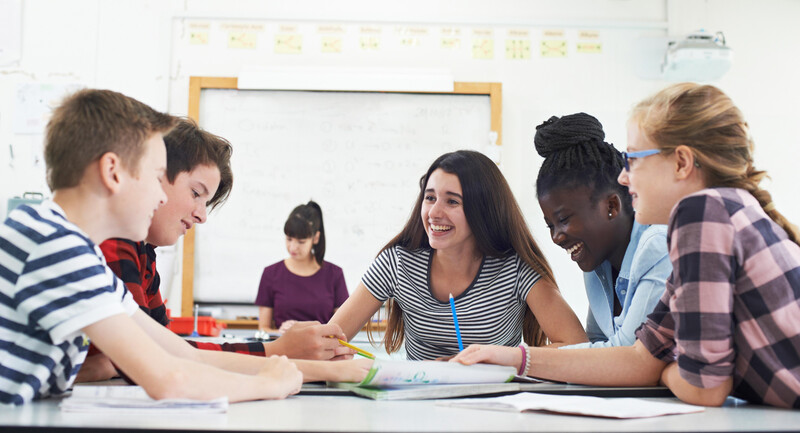ILP Lab. In one corner you see a team building and programming robots. In another a medical group learning how to take a pulse and creating presentations to give to the sixth graders for their Tdap shot. Near them, you find a marine biologist group monitoring their fish and preparing a slide presentation on sand dollars for the kindergarten classes. Beside them are three students who make up the sports team creating a baseball camp for the sixth grade. Two future teachers prepare a lesson on pumpkins they’ll present to the kindergarten. The cooking group’s researching Greek food and gathering recipes and ingredient lists for an upcoming Greek luncheon. Meanwhile, the veterinarian group is monitoring the wellbeing of their hamster and registered California desert tortoise. There are also groups for photography, art, 3-D printing, computer gaming, engineering, and architecture, CSI, paleontology, graphic design, etc.
In the midst of all this bustling activity, you’ll find a teacher bouncing from group to group, asking questions and making suggestions. Walt Disney once said he saw himself as a bee in his company, going from department to department encouraging and inspiring. This is the role of an ILP teacher.
ILP’s an educational strategy tailor-made for each student to meet their individual goals and prepare them for their future. Each student in the lab determines which field they wish to work in when they grow up.
So how does the lab work? At Kingston Elementary School in Hesperia our sixth grade dedicates a half an hour of each afternoon to ILP. We divide our grade level into three groups: one for math remediation, another for language arts and EL instruction, and a third for ILP, providing extension to those who have mastered their core subjects and need extension.
Students in the ILP Lab must set specific goals—they must know what they plan to achieve. The medical group may seek to learn 200 medical terms (a doctor has to learn over 30,000). The photography group may create a photo album of pictures they’ve taken of activities throughout the year. Each group sets aside time to study their field. Families are encouraged to provide their students with books in their chosen field. Also, there’s a growing library of magazines and books in the lab itself. The teacher forwards current articles to students in their fields.
The student’s own passion and interest provides the motivation. Kids doing things they love don’t need carrots or sticks. Students groan each day when ILP time is up—their hard work as felt like play.
Most students work in teams or with partners who share the same interest. This helps them understand the importance of getting along with others to reach their goals. They have to be polite, take turns, listen to each other, and be supportive for their team to work.
The ILP Lab also shows a student the basics for learning any field. They begin to understand that every field has its own nomenclature, its own skills and tools, and its own channels for success. Each field has a history. Each field has innovators. Why wait until college for students to learn how to understand the field they love? Imagine how much more prepared students will be for college if they have already spent seven years learning about their field before they get there.
What happens when a student wants to change their ILP field? Students are allowed to switch groups or create another group in a new field (most students will work in several fields during their employment careers). To make the change, the student is required to write a proposal explaining their reasons and what they will do in their new field. When they know how to enter a field competently, that knowledge can be transferred to any new field they encounter.
An ILP teacher must balance between hands-on and hands-off. It’s always better for the students to solve their own problems, but sometimes they’ll need signposts and suggestions. It’s also important to be lighthearted and to laugh often. Expect the unexpected. Gasp in awe when a student figures out how to make a robot extend its arm to complete a task. Clap in appreciation when a group does a presentation for their peers. Offer positive suggestions when the cooking group makes their first episode of their cooking show, explaining to kids how to make their own vegetable tostadas. The most important thing for the teacher is to have fun.
The ILP Lab gives students a vision for their future. It gives them a chance to practice and explore what they might be doing for the rest of their lives. And it makes learning relevant and fun.
Mike Apodaca is a 6th grade teacher at Kingston Elementary School in the Hesperia Unified School District in California.







